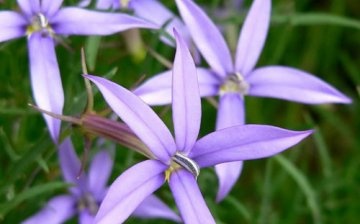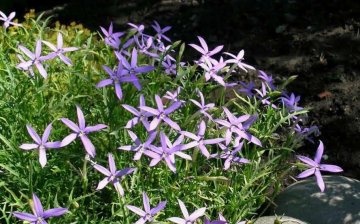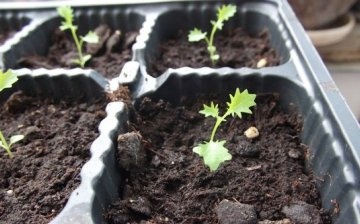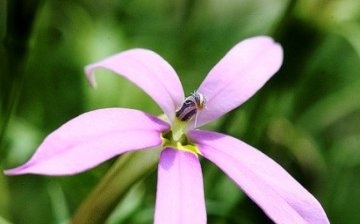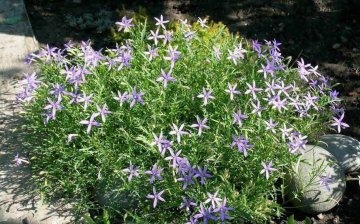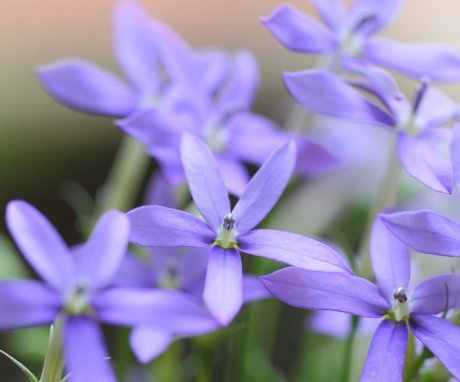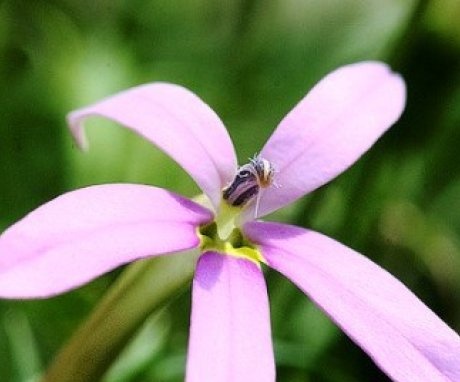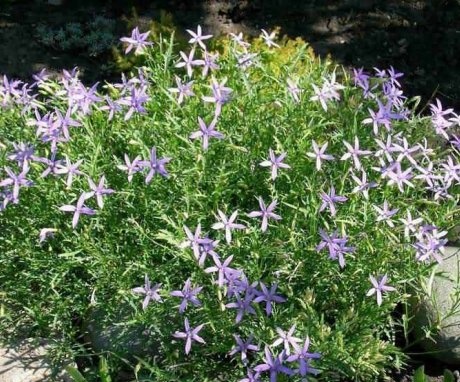Laurentia is a gentle and graceful Australian beauty for the garden
Laurentia is an amazing and rather rare plant brought from distant Australia. She conquered flower growers at first sight, a carpet of blossoming flowers gives a fabulous look to the site. Flowers are grown in flowerpots, containers, on flower beds, along borders and in the form of pictures - there are many options and none of them will lose due to the decorativeness of laurentia. From this material, the gardener learns about all the wisdom. cultivation and caring for a guest from Australia.
Content:
- Description of the plant
- Growing conditions for laurentia
- How to propagate an isotome
- Little tricks in leaving
- Laurentia pests
Description of the plant
Laurentia came to us from distant Australia. Its other name is isotome, it belongs to the family of bell-shaped flowers. At home, the plant is considered a perennial, but in Russia, its middle lane, laurentia is grown as a one-year-old. The fact is that the plant does not tolerate severe frosts, only up to -15 °. Therefore, they plant it in flowerpots or containers, which can be brought into the room for the winter.
Features of the structure of laurentia:
- Laurentia is a short plant with narrow leaves.
- In height, it can reach 30 cm, depending on the region.
- It blooms with small, 3 cm in diameter, flowers that look like a star.
- The color of the inflorescences ranges from white to purple - blue, blue, pale pink.
- The plant forms into a cap covered with flowers. Looks spectacular in flowerpots.
View "River Laurentia" is used in landscape design to cover large areas. The plant spreads along the ground and covers the ground with a thick carpet decorated with small flowers.
Isotome blooms from early spring to late autumn.
Even without flowers, the greenery of the isotome looks elegant and luxurious. In nature, the plant can be found in wetlands or wet, shady areas. In order to successfully grow a plant rare for our places, it is necessary to take into account the peculiarities of the soil for laurentia and choose the right place for it in the garden.
Growing conditions
Isotoma loves loamy soils, sandy loam. The soil should allow moisture to pass through well, and not retain it. Acidity is neutral. The best place on the site for laurentia will be a sunny, damp meadow. But the plant should not be exposed to direct sunlight, that is, it needs diffused light. If you put a beauty in partial shade, she will only be glad. However, the place should not be completely in the shade, otherwise the plant will stretch out and lose all decorativeness.
The soil should be well drained; excess moisture in the middle lane is not welcomed by the isotome. It is advisable to choose a place that is closed from the north winds.
Laurentia is a very fragile and delicate plant.
It is better to grow flowers in flowerpots. So they can be brought in for the winter and not worry about the freezing of the isotome. If you plan to grow laurentia at home, the air temperature should be 15 ° -20 ° in the summer and at least 10 ° in the winter. It is important to maintain humidity at home, the plant does not tolerate dryness, it may die. Observing all conditions cultivation, even a beginner in gardening, will be able to grow a beautiful Australian miracle of nature.
How to propagate an isotome
The plant can be propagated in three ways. All of them are quite simple and are successfully used by experienced flower growers. Which method to choose is up to you. This will depend on the purpose of growing the flowers.
You can multiply:
- Via dividing the bush - the method is used if you want to grow one or two small bushes in flowerpots.
- Via cuttings - several bushes can be grown from cuttings. Usually, the isotome is propagated in this way for planting a plant in a flowerpot.
- Seeds - the seed is used for sowing large areas. Usually the method is used for landscaping areas with trees where there is no lawn... The plant grows into a carpet and covers the entire ground without bald patches.
Depending on what the gardener is going to grow laurentiya for, a method is chosen breeding... The first method is used more often. The latter is mainly used in greenhouses and conservatories where the plant is grown commercially.
The soil for plant propagation should be loamy or sandy loam with the addition of organic and mineral fertilizers... When planting, the seeds are not deepened, but slightly pressed into the ground. For growing seedlings the air temperature must be maintained at least + 17 °. When growing laurentiya, do not forget about the features. leaving behind the plant. There are some nuances in caring for both seedlings and an already adult isotome.
Little tricks in leaving
Tips for flower growers:
- The most important requirement in caring for laurentia is her watering... The plant is very fond of moisture, but not dampness. The isotome should be watered often, but little by little. The soil must be moist. This rule also applies seedlings, and already mature plants.
- Each spring must be brought in fertilizers for flower crops. They start adding fertilizer to the soil from the first 2-3 leaves of the seedlings and continue applying every two weeks until flowering. Laurentia responds very well to feeding. You can add a little humus to the soil before planting.
- If the gardener wants to get a ball of greenery and isotome flowers in a flowerpot of the correct shape, the plant is cut off in the spring. So it will be more magnificent, the laurentia will begin to branch more actively. Procedure trimming is needed only if you want to give the plant a special shape. Otherwise, the isotome may not be cut in the spring.
- If the plant is left outside for the whole winter, the container with laurentia or the flower bed is covered with a covering material. Before this, the moistened ground is covered with a layer of mulch 5 cm high from the mowed grass, sawdust or peat. Shelter for the winter is required, otherwise the isotome will freeze.
Laurentia pests
One of the worst pests plants are considered spider mites and aphids. They strike the Australian beauty in hot, dry weather. Therefore, it is very important to maintain soil moisture.
To combat ticks and aphids with small lesions, spraying of tobacco dust infusion is used.
If the plant is severely affected, it is more expedient to treat it with chemicals, for example, "Fitoverm". Diseases on laurentia were not noticed by gardeners.
Laurentia is an unpretentious plant, it requires only timely glaze and making fertilizers during flowering... Observing all the rules of care and growing conditions, the florist will definitely grow a cap of luxurious flowers that adorn every corner of the garden.
More information can be found in the video:



